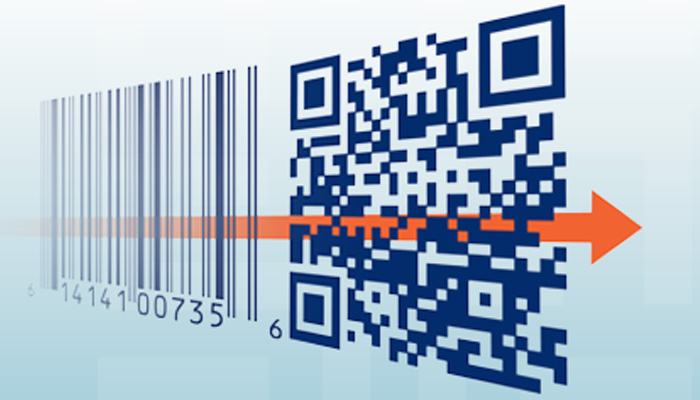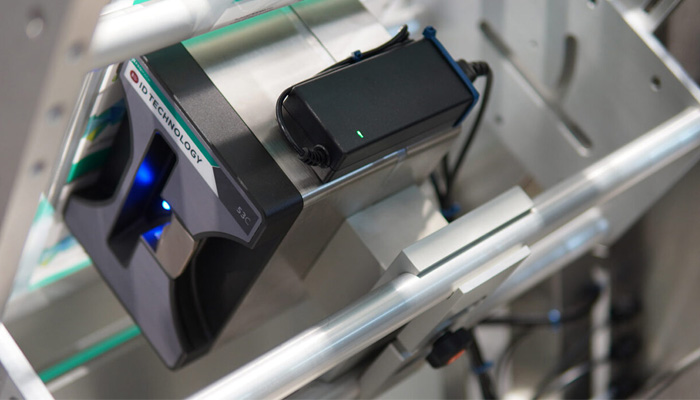
For almost half a century, UPC barcodes have been widely used in the retail industry. With Sunrise 2027, the spotlight now shifts to the emergence of Digital Links.
The traditional UPC barcodes you know well have remained essentially unchanged throughout the years. One notable update was the addition of an extra digit. This is set to change with GS1’s Sunrise 2027 initiative, which introduces 2D barcodes for retail, including the option of using the new GS1 Digital Link barcode encoding. This digital link barcode can:
• Encode your product GTIN to scan at the point of sale.
• Enable expiration date and lot control.
• Contain serialization data for traceability.
• Handle your consumer engagement.
As the new barcodes have the capability to include production data beyond just the GTIN, it will likely be necessary to print them during the packaging process.
In a recent blog post on Labeling & Coding News titled “Are You Ready for GS1 Digital Link?,” ProMach product brand ID Technology discusses not only the choices that brands now have in response to Sunrise 2027, but solutions that ProMach’s Labeling and Coding brands can accommodate for these industry changes and how they can provide guidance on the printing process changes that will likely need to be adopted.
Options Moving Forward with Sunrise 2027
As the blog discusses, brands have a few options in the Sunrise 2027 approach. The first option is to continue using the current UPC codes and take no action. The second option involves adopting a 2D barcode, such as Datamatrix or QR Code, and encoding it with the existing Global Trade Item Number (GTIN), which helps save packaging space. The third option is to adopt the GS1 Datamatrix syntax, which allows additional information like lot number, expiration date, and serial number to be encoded. The final option is to transition to the GS1 Digital Link format, which not only includes the benefits of GS1 Datamatrix but also allows for customer engagement by including a link. This option facilitates a single 2D barcode for point of sale, traceability, and customer-centric benefits like product descriptions, marketing materials, recipes, and competitions, making it easier for consumers to access product information.
As the name suggests, the Sunrise 2027 program is expected to be fully operational in 2027. Many brands are likely to phase in the use of new barcodes by initially employing both the current UPC barcode and a 2D barcode. After 2027, brands may choose to print only the 2D barcode on their products. GS1 has been collaborating with POS scanner manufacturers to ensure that scanners can handle both the current and proposed barcodes and extract the necessary data for point of sale. Additionally, efforts are underway to ensure that retail data systems can handle the increased data requirements of the new initiative. Some brands are already conducting tests or preparations for the transition.
Adjusting Printing Processes
With the shift to 2D barcodes, printing processes will need to be re-examined. Currently, UPC codes are often pre-printed as part of the packaging graphics since all items of a specific SKU share the same GTIN. However, with 2D barcodes, variable data such as lot codes, expiration dates, and serial numbers will need to be printed at the time of packaging.
However, it doesn’t have to be a difficult transition for brands moving towards the new barcodes. ProMach Labeling & Coding offers a range of product coding systems to facilitate this transition with ease. They can assist in determining the best technology for each application, setting up print formats for barcodes and human-readable information, and integrating everything with operations software.
“At ProMach Labeling & Coding, we not only provide a comprehensive range of product coding systems, but we can also work with you to determine which technology would be best for each of your applications,” states the blog. “We can also assist with setting up your print formats for the barcodes and human-readable information and work with your IT team to connect everything to your operations software.”
Solutions from ProMach Labeling & Coding
ProMach offers various print technologies, including the RAZR printer from Code Tech, which is suitable for printing barcodes, graphics, and text on different packaging materials. TTO printers (Thermal Transfer Overprinter) from ID Technology and Greydon utilize thermal transfer ribbon and produce excellent print quality for 2D barcodes. Thermal Inkjet (TIJ) Coders from Code Tech and ID Technology provide versatility and ease of use, with virtually maintenance-free operation. Laser Coders from Macsa use concentrated light beams to create high-quality 2D barcodes without requiring consumables. Greydon Digital Printers are ideal for printing variable information on flexible packaging using thermal transfer or digital inkjet technology.

Since the new 2D barcodes can encode more data than traditional UPC codes, it is crucial to have a plan to ensure accurate data delivery to printers. ID Technology Control Apps, built on the NiceLabel platform, can manage print data for all printing and labeling systems on packaging lines.
Read more about how ID Technology and Code Tech can help get you started with the transition to 2D barcoding, on the full blog post here. More information on Sunrise 2027 from GS1 can be found below:

